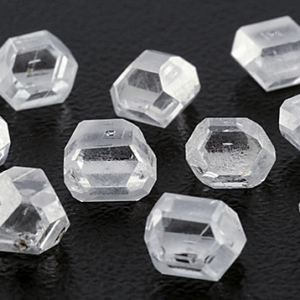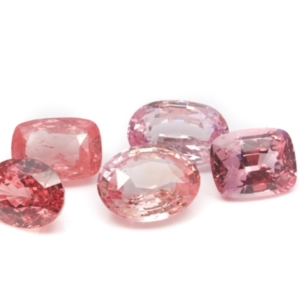Strontianite stone – properties, virtues & benefits.
Strontianite is a rare natural stone composed of strontium carbonate. It is often used in jewelry for its unique properties and beautiful white to light gray color. In addition to its aesthetic uses, strontianite is also used in industry for the production of chemicals and glass. Discover the characteristics and uses of this fascinating stone.
CHARACTERISTICS OF STRONTIANITY
- Chakra: Root (1st chakra).
- Properties: Protection, grounding, mental calm, mental clarity, concentration, emotional release.
- Astrology: Saturn.
- Zodiac: Capricorn.
- Elements: Earth.
- Colors: White, light gray.
- Hardness: 3.5 – 4 on the Mohs scale.
- Chemical Formula: SrCO3 (Strontium carbonate).
- Associated god: /
PIERRE STRONTIANITE – ITS HISTORY
The mineralogist Sulzer gave the name “strontianite” to a stone discovered in the Scottish village of Strontian in 1790. This stone led to the discovery of a new element, strontium, which was identified from this mineral. Since then, the stone has been used in a variety of applications.
STRONTIANITE STONE – ITS ORIGIN AND COMPOSITION
Strontianite is a carbonate mineral that forms mainly in strontium-rich sedimentary environments, such as limestone and dolomite layers. It is often found in association with other minerals such as calcite, aragonite, barite, fluorite and quartz.
Strontianite’s chemical formula is SrCO3, which means it’s composed of one strontium atom, one carbon atom and three oxygen atoms. Its size and dimensions can vary according to its geological formation, and it exhibits interesting optical phenomena such as fluorescence, phosphorescence and luminescence.
Strontianite is found in many parts of the world. In Austria, deposits have been discovered at Kalchberg, Stallhofen, Voitsberg, Köflach and Styria. In Canada, the stone is mainly found at Poudrette, Mont Saint-Hilaire, in Rouville County, Quebec. In the United States, celestine was discovered in the Minerva No. 1 mine, located in the Cave-in-Rock sub-district of Hardin County, Illinois. In France, the Rémuzat (“Laget”) deposit in the Drôme, Rhône-Alpes region, is also an important celestine deposit. Finally, in Scotland, the town of Strontian, in the North West Highlands (Argyllshire), is home to the topotype deposit of strontianite, which is a mineral species of the carbonate class composed mainly of strontium carbonate.

STRONTIANITE STONE – VERTIES AND PROPERTIES
Strontianite is a stone used in lithotherapy for its beneficial virtues on psychological well-being thanks to its high energy content. It is gentle and suitable for children as well as vulnerable people, bringing calm and comfort. It is particularly recommended for young children and babies suffering from anxiety attacks, as it soothes and relieves, providing a sense of security. As well as relieving oppression and strain, Strontianite has a soothing action on the lungs and ribcage, relieving anxiety.
The stone named by mineralogist Sulzer is also useful for overcoming feelings of uselessness or incapacity by promoting self-confidence. It helps to find peace and serenity, allowing one to free oneself to better devote oneself to others.
PSYCHOLOGICAL STRONTIANITY
Strontianite has creative and artistic properties that promote imagination and help overcome stage fright and nervousness. This stone is also beneficial for stimulating communication and clairvoyance by opening the throat chakra and resolving communication problems. It promotes peace and harmony, strengthening friendships and relationships and avoiding conflict. What’s more, Strontianite is renowned for its soothing virtues and ability to bring love and relieve pain.
The stone is often used in meditation as it helps achieve wisdom, sPiritual peace and enlightenment thanks to its high vibration. It helps to reconnect with one’s cosmic consciousness and activate one’s sPiritual awareness, making celestine a useful stone for those seeking to unite with the universe. It also promotes clairvoyance, helPing to eliminate negative thoughts that hinder self-realization. Finally, by placing this multi-beneficial stone on the third eye corresponding to the sixth chakra, it aligns the chakras and connects to universal divine forces, creating inner peace.
STRONTIANITY ON THE PHYSICAL LEVEL
Celestine, or Strontianite, has many virtues for relieving physical ailments by helPing to treat hearing and vision problems, as well as the thyroid. It has a soothing property that helps muscle relaxation, reduces tissue aging and contributes to the disappearance of nodules in organs and tissues. The stone improves breathing by regulating the lungs and is highly effective in aligning and rebalancing the chakras, particularly the fifth throat chakra, thus treating problems related to this organ and accelerating tissue regeneration after surgery such as tonsil removal.
Celestine can be used to relieve aches and pains such as painful periods or headaches due to its relaxing qualities and impressive characteristics (weight, grade, size). In addition, it is beneficial against infertility-related disorders and possesses the unique ability to regenerate cells and promote raPid wound healing. As such, the stone possesses numerous therapeutic virtues for physical, psychological and sPiritual well-being, thanks to its relaxing and calming powers that help restore serenity.

STRONTIANITE STONE – CLEAN AND RECHARGE
To clean and recharge strontianite stone, here are some methods you can use:
Cleaning:
- Distilled water: you can clean your strontianite by gently rinsing it with distilled water for a few seconds.
- Fumigation: you can use white sage or palo santo to purify your stone by passing it through smoke.
- Earth: burying your stone in a pot of earth for a day can help cleanse it of negative energies.
Loading:
- Moonlight: place your strontianite in the light of a full moon for one night to recharge.
- Crystal clusters: place your stone on a crystal cluster such as amethyst, quartz or citrine to recharge it with positive energy.
- Meditation: hold your strontianite in your hands and visualize it filling with positive energy while letting go of negative energies.
It is recommended to clean and recharge your strontianite stone regularly depending on its use.
WHERE DOES THE NAME STRONTIANITE COME FROM?
The name strontianite comes from the small town of Strontian, located in the Scottish Highlands, where the stone was first discovered in 1790 by Adair Crawford, a Scottish chemist. The town of Strontian also takes its name from strontianite, as it was founded on the site of a lead and zinc mine containing strontianite. The name “strontian” was chosen to honor the village and the area where the stone was found.
WHICH CHAKRA DOES STRONTIANITY ACT ON?
Strontianite acts primarily on the root chakra, also known as the first chakra. This chakra is located at the base of the sPine and is associated with grounding, stability, security and strength. By working on the root chakra, strontianite can help strengthen ties with the earth, increase self-confidence and bring a sense of security and stability to the wearer. It can also help release emotional blockages and promote a calm, clear state of mind.
WHICH ASTROLOGICAL SIGN IS ASSOCIATED WITH STRONTIANITY?
Strontianite is not associated with any particular astrological sign because it is a mineral species, i.e. a natural substance formed by geological processes. Astrology, on the other hand, is based on the position of the stars and the interpretation of their influence on living beings. There is therefore no direct link between strontianite and astrology.
STRONTIANITE STONE SUMMARY
Strontianite is a mineral composed of strontium carbonate (SrCO3) that occurs as crystals or granular masses. It has a hardness of 3.5 to 4 on the Mohs scale and a density of 3.7 to 3.8 g/cm³. It is transparent to translucent and can come in a variety of colors, including white, gray, yellow, green and Pink.
Strontianite is used as a source of strontium, a chemical element used in the production of glass for TV sets and computer screens, as well as in fireworks. It is also used in geology for radiometric dating and in nuclear medicine to produce radioactive isotopes.
Strontianite was first discovered in Strontian, Scotland, from which it takes its name. It occurs in hydrothermal veins associated with igneous and metamorphic rocks, and can also form in marine fossil deposits.

